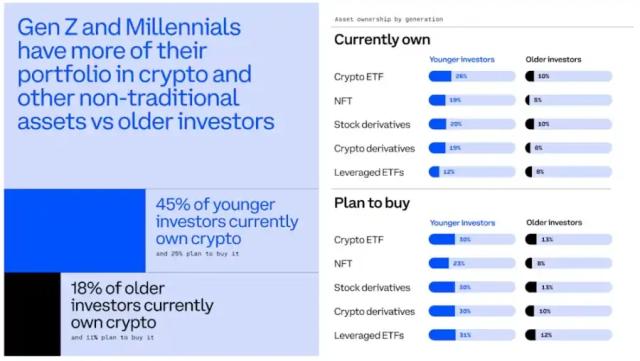Original text:BlockBlick
Compiled by: Yuliya, PANews

After experiencing months of violent fluctuations in the Altcoin market, the new episode of the 'BlockBlick' podcast analyzes the recent dynamics of the Altcoin market, especially the performance of Ethereum and Solana, as well as the future direction of the entire Altcoin market. PANews has compiled the text of this podcast episode.
Ethereum: Weak Prices and Ecological Progress
Recently, the Ethereum market has experienced violent fluctuations, setting a new record for single-day liquidation volume. According to Coinglass data, the liquidation volume of Ethereum longs and shorts in a single day exceeded previous major events, including the FTX collapse and the Three Arrows Capital crisis. Market sentiment is extremely depressed, and short positions on the CME futures market have also reached new highs, indicating a lack of investor confidence in Ethereum. Nevertheless, some investors have used the price pullback to position themselves, with over $300 million in inflows to Ethereum-related ETFs this week.
Ecological and Technical Progress
Despite the weak prices, Ethereum's technical ecosystem is steadily developing:
Transaction throughput reaches new highs: The transaction processing capacity of the mainnet and Layer 2 networks has reached historical highs, indicating that the network's scalability is improving.
Gas limit increase: The gas limit on the Ethereum mainnet has increased by more than 20%, increasing the transactions per second (TPS) and significantly reducing transaction fees. In the past week, Ethereum mainnet transaction fees have fallen to historical lows. Solutions like Base have raised the gas limit to 60 million in an effort to increase network throughput and further expand market demand.
Growth in tokenized assets: The total value of tokenized assets on the Ethereum mainnet has exceeded $17 billion, dominating the market. Physical assets such as loans, commodities, and US Treasuries have been extensively transferred to the blockchain, with over 80% of tokenized assets distributed on the Ethereum mainnet and its Layer 2 networks.
Inflation Issue
However, the low gas fees also reflect a decline in the utilization rate of the Ethereum network, and the ecosystem's activity has slowed. Since the Merge, Ethereum has entered an inflationary state for the first time, and the current Ethereum supply has exceeded pre-Merge levels, indicating an increase in the number of Ethereum tokens in circulation. By observing the Ultrasound Money chart, it can be seen that Ethereum's deflationary trend has lasted for years, but since the emergence of Layer 2 scaling solutions, which have reduced the dependence on the main chain, the Ethereum burn rate has decreased, causing the Ethereum supply to gradually return to an inflationary state.
However, compared to Bitcoin, Ethereum's inflation rate is still relatively low, and is expected to fluctuate between -1% and +1% in the future. Therefore, although the market is concerned about this, the fluctuation is expected and does not mean that the long-term health of the Ethereum ecosystem is threatened.
It is worth noting that in the past week, only 1% of Bitcoin miner revenue came from transaction fees, with the rest mainly dependent on block rewards. Considering Bitcoin's halving mechanism every four years, if the mainnet transaction volume cannot increase significantly, miners' future revenue may face challenges.
Solana: Technical Stability and Meme Coin Craze
Improved Technical Stability
Compared to the challenges faced by Ethereum, Solana has shown strong momentum. Although its price has fallen from a historical high of $250 to $202, the decline has been relatively moderate. Solana network has recently reached an important milestone: it has achieved a full year of operation without major failures, which is significant in its development history. Particularly in the past 35 days, even facing the Meme coin craze and the launch of the Trump Meme coin, the network has maintained stable operation.
According to Artemis data, Solana is far ahead in terms of daily active addresses:
Solana: 5-6 million active wallets per day
Base: about 700,000-800,000
Ethereum mainnet: about 400,000
These developments may affect the competitive landscape of the Altcoin market. While Ethereum maintains a leading position in enterprise-level applications and the tokenization of physical assets, Solana's advantages in performance and user activity cannot be ignored. For market participants, this competitive situation provides more diversified investment choices.
The Double-edged Effect of the Meme Coin Craze
Solana ecosystem's recent activity has partly benefited from the popularity of Memecoins, especially driven by the Pump.fun platform. Data shows that the platform can generate about 70,000 new tokens per day, with a total of 7.5 million tokens. According to CoinMarketCap data, the total number of issued Tokens is close to 11.04 million, indicating that Pump.fun accounts for a considerable market share.
However, the Memecoin craze has also brought some negative effects: a large influx of funds into the Memecoin market has reduced the attention on other projects, leading to a dispersion of market funds. In addition, many investors have suffered losses due to the high speculative nature of Memecoins, further undermining market confidence. This is also an important challenge facing the current Altcoin market: although there is a large amount of capital inflow, most of the funds are directed towards short-term, high-risk investments, lacking long-term sustainable projects. In this process, while some projects like Bitcoin and Solana have shown stable growth, other projects have struggled to generate meaningful value. This situation has made the entire market unsustainable, especially for Ethereum, which is still among the projects with long-term value.
Although Solana has made progress in technical stability, on-chain activity has recently declined. Data shows that Solana's active addresses and Memecoin trading volume have both retreated from their peaks, indicating that market enthusiasm for Memecoins is gradually waning. The launch of the Trump Meme coin is considered the peak of this craze, but as the speculative fever subsides, Solana needs to find new growth drivers. In addition, the activity of Base and other blockchains has also shown similar declines, indicating that the retail participation in the entire Altcoin market is weakening.
At the same time, Bitcoin's network activity has also shown similar weakness, and the overall blockchain activity is experiencing a downturn. An important issue in the current market is that many investors seem to have lost their enthusiasm for Altcoins, especially in the absence of sufficient "cheap capital", lacking large-scale market incentives. Due to the impact of macroeconomic factors such as interest rate hikes, the demand for risky assets has decreased, leading to weaker-than-expected performance in the Altcoin market.
High Interest Rates, Inflation, and Money Supply
Historically, cyclical bubbles and corrections are common phenomena in the Altcoin market. During periods of depressed market sentiment, new entry opportunities often arise. Currently, we are in a relatively negative market sentiment phase, with declining market activity. However, this may be a precursor to future rebounds. As the Crypto Fear and Greed Index shows, when the market is in a state of fear, it may be a period where opportunities can arise in the long run. Investors may start to position themselves again, and the market sentiment may turn positive.
The main issue in the current market is the interest rate environment. A true Altcoin bull market, the so-called "Altcoin season", can only be realized when people can access low-cost capital. However, in this cycle, due to the US interest rate remaining at around 4.5%, the market has not experienced this situation.
In terms of market liquidity, from November last year to January 20th when Trump took office, there were billions of dollars of stablecoin inflows into Altcoin exchanges such as Binance and Coinbase every day. However, this strong momentum has weakened recently, and although it is still maintaining a positive inflow, the momentum has clearly declined, and it may even turn negative.
Regarding the future trend, the market is mainly focused on the policy direction of the Federal Reserve. Currently, US inflation is still high, and the Federal Reserve is not yet prepared to cut interest rates, which to some extent limits the development of the market and delays the arrival of the true Altcoin season.
The next Federal Reserve interest rate decision will be held on March 18-19. Trump is actively pushing for a rate cut, which is one of his important policy agendas. Enterprises can only thrive and venture capital can only be active when the market has ample funds. Trump has strongly criticized the decision to keep the interest rate unchanged on January 29th, but before the inflation problem is fully resolved, rate cuts still face challenges.
Looking at the data, the US inflation rate is close to the 2% target level. Since June 2022, the inflation rate has continued to decline, although there have been some stagnation during this period, but the overall downward trend is still ongoing. The market expects a 92% probability of a rate cut by the Federal Reserve in March, which is a fairly strong expectation. However, there is an opinion that Trump's tariff policy may lead to a rebound in inflation, but this impact may be limited to specific commodities and will take time to reflect in the data.
The drop in oil prices is crucial to controlling inflation, and Trump is actively pushing to increase domestic oil production. In addition, the weakness of the US dollar has also provided favorable support for the Bitcoin price. Therefore, from the data, this may be a good entry point at the moment.
Although the fundamentals are positive, the market is currently facing many uncertainties, including the specific implementation of the tariff policy and the possible reactions of China and the EU. These uncertain factors are putting pressure on the market, but this situation will not last forever.
Institutional and Regulatory Progress
The market is undergoing many major changes. Although not all issues have been resolved at the moment, some of the progress is still worth noting:
Crypto Task Force: Under the leadership of HESTP, a dedicated Crypto Task Force has been established. They will work to establish a regulatory framework as soon as possible, to clarify the rules for all investors in the Altcoin and blockchain markets. The task force will continue to release the latest progress through its official website.
Bitcoin ETF Plan: Trump Media Group, Trump's media conglomerate, plans to launch a Bitcoin ETF called "Truth Bitcoin Plus ETF", indicating that Trump Media Group is also entering the ETF field, trying to expand its influence in the Altcoin market by launching a Bitcoin ETF.
Klarna Enters Crypto Payments: The well-known European payment company Klarna is expanding its Altcoin business. They plan to integrate Altcoin payment functions into their existing applications, which means that users will be able to use Altcoins for payment directly through the Klarna platform in the future.
Rumors about the Chinese Market: The market has once again seen rumors about China possibly re-accepting Altcoins. Although such news appears every few years, the authenticity remains to be verified, but it is still worth paying attention to.
Overall, the Altcoin industry is undergoing unprecedented fundamental changes:
The US is establishing a positive regulatory framework, demonstrating its willingness to take the lead in the Altcoin field, similar to the early support for tech companies like Facebook and Amazon in the early Internet era.
Nowadays, other countries around the world have also realized that the Altcoin market is becoming an important part of the future economy, and they are expressing their desire to participate.
Although these changes will take time and may not meet the market's expectations for rapid change, the direction of development is clear.
The current market cycle is indeed longer than previous ones, and there are good reasons for this:
High interest rate environment continues
Inflationary pressure still exists
Completely different from the environment of massive monetary easing during the COVID-19 pandemic
Currently in a more stable economic environment, the Federal Reserve does not have the urgent pressure to cut interest rates
From a positive perspective, the fact that the economy can withstand the current high interest rate level is a healthy signal in itself. This indicates that the economic fundamentals remain sound, laying the foundation for sustainable development in the future.
Summary and Recommendations
The current market environment is very different from the past. If the policy is overly loose, it may lead to a new round of inflation in the long run, which is clearly not the result the market expects.
For market participants, it is crucial to remain calm and rational. Currently, it is necessary to:
Temporarily avoid using leverage
Be patient and accept the fact that the market will take longer to turn around
Continue to pay attention to the market and do not completely disengage from the market
Learn from the lessons of those investors who were forcibly liquidated last week
Maintaining a cautious and calm investment mindset is more important than ever. Market dynamics will continue to be updated, and the key is to always remain vigilant and strictly control risks.







